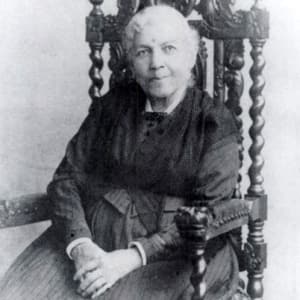
Bill Watterson
Bill Watterson is best known for his comic strip creation “Calvin and Hobbes,” about a boy and his imaginary toy tiger friend.
Synopsis
Bill Watterson was born on July 5, 1958, in Washington, D.C. While attending Kenyon College, Watterson drew cartoons for the college paper, leading to a position at the Cincinnati Post. Watterson wanted to draw comic strips and began trying to syndicate his original creation, "Calvin and Hobbes," a cartoon about a rambunctious boy and his imaginary toy tiger friend that went on to garner wide fame.
Early Life
Bill Watterson was born on July 5, 1958, in Washington, D.C. When he was 6 years old, Bill Watterson moved with his father James, a patent attorney, and his mother, Kathryn, to Chagrin Falls, Ohio. After the family settled in, Kathryn soon won a seat on the city council. James Watterson would also serve on the Chagrin Falls city council, but not until some 30 years later.
As a child, Bill Watterson—unlike his creation Calvin—"never had imaginary animal friends," he later remembered. "I generally stayed out of trouble, I did fairly well in school." He developed an early interest in drawing, and was inspired by classic cartoonists like "Peanuts" creator Charles Schulz and "Pogo" illustrator Walt Kelly.
In 1976, Watterson enrolled at Ohio's Kenyon College, where he spent four years drawing political cartoons for the Collegian campus newspaper (and a few weeks during his sophomore year painting a copy of Michelangelo's "Creation of Adam" on his dorm room ceiling). Following his 1980 graduation, Watterson was immediately offered a job as an editorial cartoonist at the Cincinnati Post.
His editors were unimpressed with his work, however, and less than a year later Watterson found himself unemployed and living back home with his parents. He decided to abandon political cartoons (he was not particularly interested in politics anyway) and return to his first love: comic strips.
The next few years proved mostly discouraging. Watterson sent his strips to countless newspapers and received nothing but rejection slips. For a time, he took an unhappy job designing advertisements for car dealerships and grocery stores. This period in his life was important, he later said, because it proved to him that the substance of his work mattered more than money. "To endure five years of rejection to get a job requires either a faith in oneself that borders on delusion, or a love of the work," he told the 1990 graduates of his alma mater in a commencement speech. "I loved the work."
'Calvin and Hobbes'
After experimenting with several different characters, Watterson developed a strip called "Calvin and Hobbes." It starred Calvin, a rambunctious first-grader who sounded "like a 6-year-old psychotic on Ritalin one day and a Yale lit grad the next," as one journalist put it, and Hobbes, a stuffed tiger who came to life only when alone with Calvin. Universal Press Syndicate bought the strip in 1985, giving Watterson, then just 27 years old, a national audience.
Readers loved "Calvin and Hobbes"—Calvin's flights of wild imagination, often undertaken while clad in rocket-ship underpants; Hobbes's wry observations; and the sensitive, wise, literary voice of the strip itself (the main characters were named after theologian John Calvin and philosopher Thomas Hobbes). In 1986, Watterson became the youngest cartoonist ever to receive the National Cartoonists Society's Reuben Award—the industry's highest honor.
With the strip's popularity exploding, Universal Press Syndicate was eager to produce and sell "Calvin and Hobbes" merchandise. Watterson refused. Merchandising, he said, "would turn my characters into television hucksters and T-shirt sloganeers and deprive me of characters that actually expressed my own thoughts." That's why there are no official "Calvin and Hobbes" toys or t-shirts, though unauthorized reproductions of the characters still abound. "I clearly miscalculated how popular it would be to show Calvin urinating on a Ford logo," Watterson once quipped, referring to the popular bootleg car window decals.
After 10 years of writing delighting readers, Watterson announced in 1995—to the heartbreak of fans—that he was ending the strip, saying that he had done all he could with "Calvin and Hobbes." The final "Calvin and Hobbes" piece ran on December 31, 1995.
In 2014, in an effort to raise money to fight Parkinson’s disease, it was revealed that Bill Watterson collaborated with cartoonist Stephan Pastis on Pearls Before Swine. The pair teamed-up to create the comic strip in support of Team Cul de Sac and the Michael J. Fox foundation. Watterson also contributed poster art for the documentary Stripped.
Bill Watterson and his wife live in Cleveland, where he keeps a low profile and declines most interview requests. He says he has no regrets about ending the strip when he did. "It's always better to leave the party early," he said in a rare email interview with the Cleveland Plain Dealer in 2010. "If I had rolled along with the strip's popularity and repeated myself for another five, 10 or 20 years, the people now 'grieving' for 'Calvin and Hobbes' would be wishing me dead and cursing newspapers for running tedious, ancient strips like mine instead of acquiring fresher, livelier talent. And I'd be agreeing with them."




